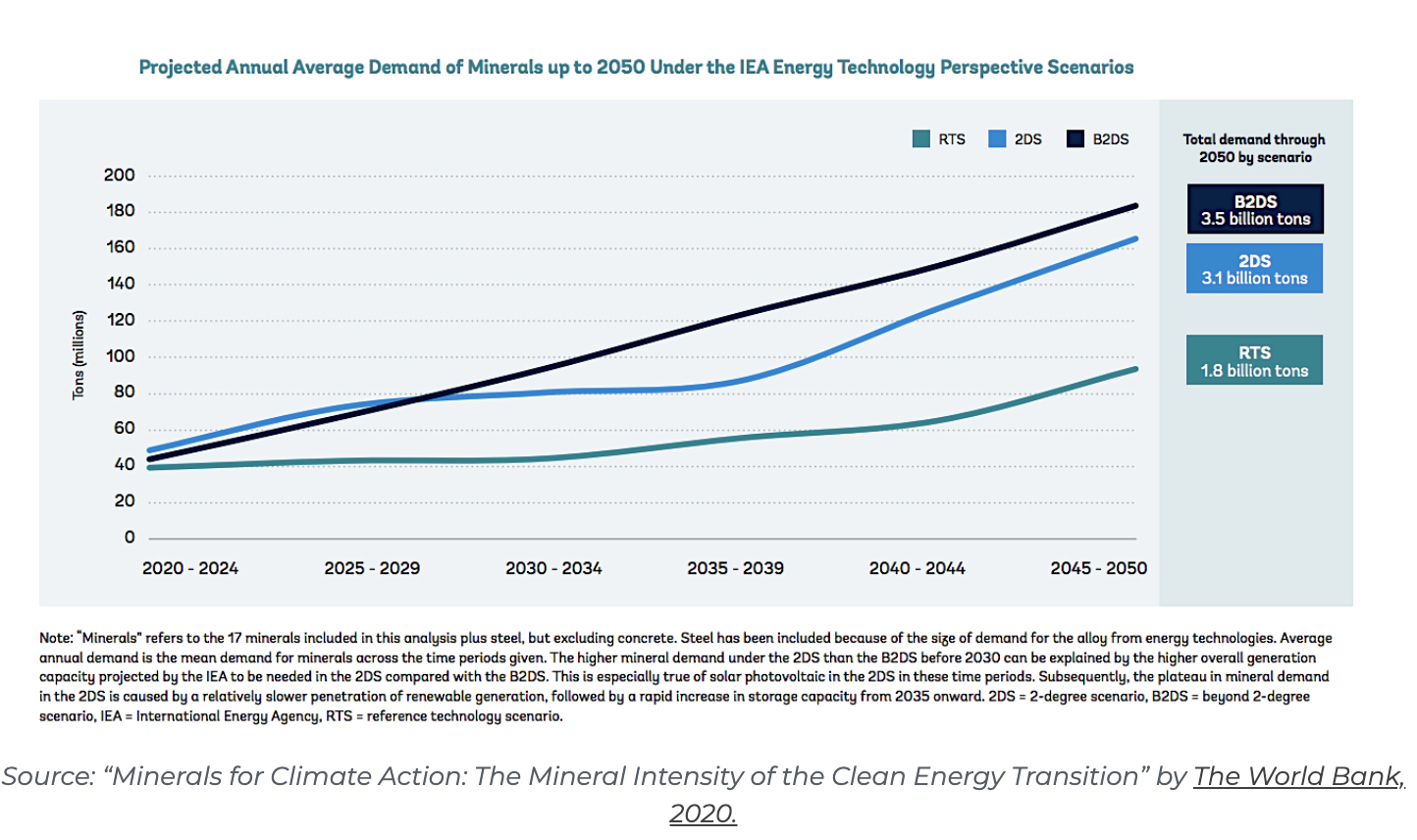Production of so-called battery metals, such as graphite, lithium and cobalt, will have to increase by nearly 500% by 2050 to meet the growing demand for clean energy technologies, the World Bank said on Monday.
According to the global lender, over 3 billion tonnes of minerals and metals will be needed to deploy wind, solar and geothermal power, as well as energy storage required for mov transitioning to a low-carbon economy.
Many of the critical minerals used to make batteries for electric vehicles are found in developing nations. The World Bank’s goal is to help those nations to mine those commodities in a sustainable way to avert major ecological damage.
Mining the vast amount of key commodities the world will need in 30 years is seen as the only path to achieving the goals of the Paris Agreement. The accord seeks limiting global warming to 2°C or less.
Getting to that point, the report says, will require global carbon emissions of greenhouse gases to be deeply reduced by 50% by 2030 and to net-zero by 2050
The finds confirms the premise of a first report, published in 2017, which warned that the more ambitious the climate targets become, the more minerals and metals will be needed.
While renewables and energy storage technologies require more minerals, the carbon footprint of their production — from extraction to end use — will account for only 6% of the greenhouse gas emissions generated by fossil fuels, the study says.

The Minerals for Climate Action report also calls for more recycling and reuse of minerals, saying it will play a key role in meeting increasing mineral demand.
It also notes that, even if we scale up recycling rates for minerals like copper and aluminum by 100%, recycling and reuse would still not be enough to meet the demand for renewable energy technologies and energy storage.
Virus ambush
Some minerals, like copper and molybdenum, will be used in a range of technologies, the report says. Others, such as graphite and lithium, may be needed for just one technology: battery storage. Related: Could Coronavirus Derail The EV Boom?
That means that any changes in clean energy technology deployments could have significant consequences on demand for certain minerals, it shows.
The lender warns about the disruptions covid-19 is causing and will continue to trigger in the global mining industry. In addition, developing countries that rely on minerals are missing out on essential fiscal revenues.
As their economies start to reopen, the bank noted, they will need to strengthen their commitment to climate-smart mining principles and mitigate any negative impacts.

“Covid-19 could represent an additional risk to sustainable mining, making the commitment of governments and companies to climate-smart practices more important than ever before,” said Riccardo Puliti, World Bank Global Director for Energy and Extractive Industries and Regional Director for Infrastructure in Africa.
“This new report builds on the World Bank’s long-standing expertise in supporting the clean energy transition and provides a data-driven tool for understanding how this shift will impact future mineral demand,” Pulite said.
The World Bank’s updated predictions echo a February report by Moody’s, indicating that green, social and sustainability bond issuance is expected to hit a combined record of $400 billion just this year. That’s up 24% from the previous record of $323 billion achieved in 2019.
By Mining.com
More Top Reads From Safehaven.com:

















